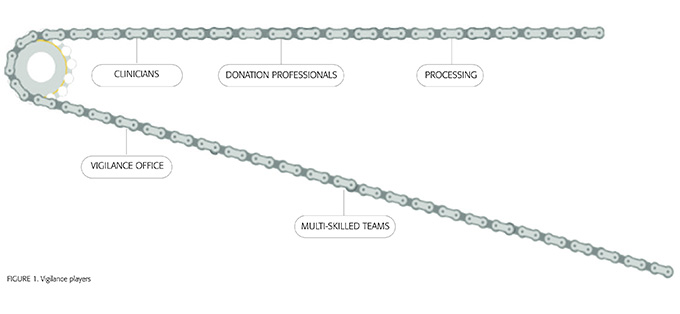This guidance aims to provide a didactic overview of V&S for MPHO targeting clinicians and health authorities. In order to facilitate its use, the booklet has been divided in chapters, each addressing an aspect of V&S for MPHOs. It demonstrates the necessity, and the potential of V&S to improve practices and therefore the paramount importance of V&S for MPHO. The structure of this document was designed for accessibility via the Internet where sections (links) can be consulted independently and adapted to the needs of the user.
The NOTIFY booklet provides examples which demonstrate the improvement of the care of both the recipients and donors, from the recognition and diagnosis of adverse occurrences to the appropriate investigations and treatment after having drawn upon the references in the NOTIFY Library (www.notifylibrary.org). The success is the reflection of the work of all the professionals who have contributed to the NOTIFY Library.
Initially, the NOTIFY booklet was to be focused on cells, tissues and organs for transplantation, as well as gametes and embryos for ART (first edition 2014). As the NOTIFY project is now expanding to cover all MPHO, blood and blood products have been included in the scope (second edition 2017).
The mechanism that characterizes the NOTIFY project, editorial workgroups of volunteer experts and support from national authorities, as well as scientific and professional societies, applies to the development of the booklet. Proposals for improvement will be assessed and edited by the NOTIFY team, with the help of a panel of experts, and will eventually be integrated to the booklet. If you have comments or suggestions to improve this guide, please send them to: notifylibrary@iss.it
Effective V&S requires many players to collaborate together, each one fulfilling its particular role (Figure 1):
- Clinicians detecting and reporting adverse occurrences in recipients;
- Donation professionals detecting and reporting adverse occurrences in donors;
- Technical personnel detecting and reporting errors and mistakes in processing, storage and distribution;
- Multi-skilled teams investigating causes and defining corrective and preventive actions;
- Responsible individuals or organizations publishing and disseminating vigilance information to help others to learn from the cases and to prevent recurrence elsewhere.
This document addresses each step in the vigilance chain. Like a chain, thanks to the effort of all stakeholders, V&S for MPHO has the power to be the driver of excellence from donation to clinical application.

